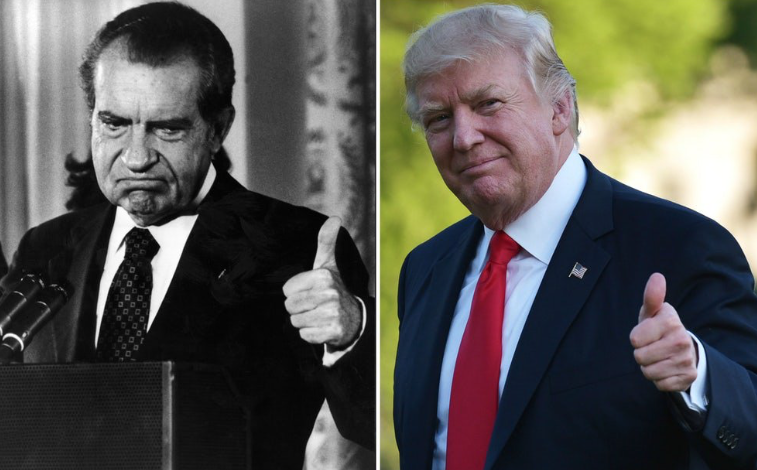50 Years Ago Today: Nixon vs. Trump
On Nov. 5, 1968, the American public voted Richard Nixon president. Now, fifty years later, we watch a curious figure with Nixonian qualities as he fights for his credibility and power. This fight started to really materialize when, almost a year ago, President Trump fired former FBI Director James Comey, as allegations of collusion with Russian officials began to swarm and Comey was gathering steam in his investigation. In the months that followed, many parallels were drawn between Trump and Nixon. The Atlantic even claimed that “no president has loomed as large over Donald Trump as Richard Nixon.” Here are a few of these large parallels: he works to claim an inappropriate amount of power, he makes a constant enemy of most of the press at large and he fired an official who at the same time happened to be investigating him. The careless abuse of power is evident in a single moment of Nixon’s public persona, and it relates directly to Trump. In 1977, Nixon told a television host, “When the president does it, that means it’s not illegal.” While this may have been long since he was humiliated and resigned, he still proclaimed this to the American public, obviously still in avid defense of his illegal activity. In Dec. 2017, Trump’s lawyer John Dowd told reporters that the president “cannot obstruct justice because he is the chief law enforcement officer.” This refers directly to the idea that Nixon put forward 40 years before. Not only do we see a parallel in the two presidents’ misgivings about their invincibility, but we see the same type of parallel in their incessant and excessive hunger for global power and control. Both presidents signed a large number of executive actions in their presidencies, and in both of their first years as president they signed over fifty. Both of them also have been seen using their staff as pawns in a game to exercise their power. For Trump thus far it has been mostly a game of “You’re fired,” which seems to be what happens when one of his officials disagrees with him too much. For Nixon it was more a game of “if you don’t fire special prosecutor Archibald Cox, you’re fired,” which could be seen as more of a survival tactic, but for both men, staff has been somewhat at their mere expenses. The moment when critics began to truly shudder with deja-vu was when Trump fired FBI Director Comey. This was when things really started to look less like a game of The Apprentice and more like the Watergate scandal, and since then, the line connecting Trump and Nixon has only bolded. Trump followed most obviously in Nixon’s footsteps in his comfort with demonizing the press. Nixon saw the media establishment as the attacker. He went after different news organizations, publicly attacked them in speeches, and even kept an “enemies list” of reporters who did not like him. He’s remembered famously to have said in an Oval Office recording, “the press is the enemy...the press is the enemy….the press….is the enemy.” Trump has said publicly that the press is “the enemy of the American public.” He has made personal enemies of many prestigious, rather objective news organizations, berating them publicly, and basically coined the term “fake news” as a defense against stations he felt shone him in a negative light. As the parallels have piled up, the question has begun to surface: is Trump purposefully using Nixon’s presidential strategies? Or are these parallels incidental warning signs that simply tell us about the road down which our president is heading?
